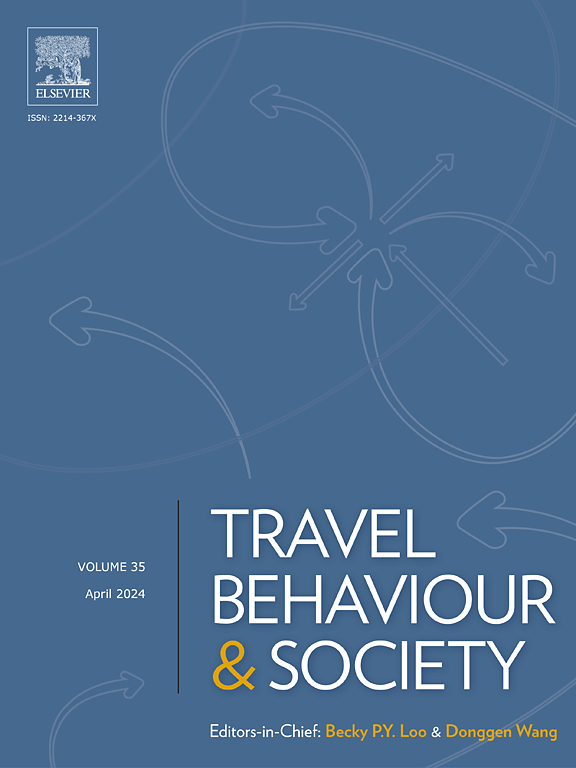Studying transfers in informal transport networks using volunteered GPS data
IF 5.1
2区 工程技术
Q1 TRANSPORTATION
引用次数: 0
Abstract
Multimodal integration is an important issue in public transport systems due to its influence on both passenger experience and overall network efficiency. In most countries in the global South, achieving integration is particularly problematic because of the informal nature of most public transport. Decentralised service planning and demand responsiveness lead to often uncoordinated, highly variable service patterns, which are not optimised from a passenger perspective. Efforts to promote integration are also hampered by a lack of planning data on routes, service frequencies, and transfer locations. This research asks whether GPS data supplied by passengers as they move through the network can be used to help form a better understanding of the extent and quality of the transfer experience. The data was collected in the City of Tshwane, South Africa, among informal minibus-taxi passengers. Post-processing involved the use of a machine learning algorithm to identify in-vehicle, wait and walk segments, which were used to identify transfers between one vehicle and another. The results showed that many transfers are spatially efficient with short walk and wait times, but that a minority of transferring passengers may experience very long transfers. Transfers encompass a diverse range of behaviours including pacing, shopping and browsing, and typically involve much more walking than waiting. Transfers also occur across a wide range of locations, but tend to be concentrated in certain nodes and along street segments. Strategies to improve transfer facilities as well as general walkability might be targeted at such locations. The study demonstrated that volunteered GPS data is a promising source of information to help planners understand the transfer experience in multimodal networks in data-poor environments.
利用志愿提供的 GPS 数据研究非正规交通网络中的换乘情况
多式联运一体化对乘客体验和整体网络效率都有影响,因此是公共交通系统中的一个重要问题。在全球南部的大多数国家,由于大多数公共交通的非正规性质,实现一体化尤其困难。分散的服务规划和对需求的响应导致服务模式往往不协调、变化很大,从乘客的角度来看无法实现最优化。由于缺乏有关路线、服务频率和换乘地点的规划数据,促进一体化的努力也受到了阻碍。本研究提出的问题是,乘客在网络中移动时提供的 GPS 数据是否有助于更好地了解换乘体验的范围和质量。数据是在南非茨瓦内市非正式小巴-出租车乘客中收集的。后期处理包括使用机器学习算法来识别车内、等待和步行片段,这些片段用于识别一辆车与另一辆车之间的换乘。结果表明,许多换乘在空间上是高效的,步行和等待时间都很短,但少数换乘乘客的换乘时间可能很长。换乘包含多种行为,包括踱步、购物和浏览,通常涉及的步行时间比等待时间要长得多。换乘也发生在各种地点,但往往集中在某些节点和沿街路段。改善换乘设施和步行便利性的策略可以针对这些地点。这项研究表明,自愿提供的 GPS 数据是一种很有前景的信息来源,可帮助规划人员了解在数据匮乏的环境中多式联运网络中的换乘体验。
本文章由计算机程序翻译,如有差异,请以英文原文为准。
求助全文
约1分钟内获得全文
求助全文
来源期刊

Travel Behaviour and Society
TRANSPORTATION-
CiteScore
9.80
自引率
7.70%
发文量
109
期刊介绍:
Travel Behaviour and Society is an interdisciplinary journal publishing high-quality original papers which report leading edge research in theories, methodologies and applications concerning transportation issues and challenges which involve the social and spatial dimensions. In particular, it provides a discussion forum for major research in travel behaviour, transportation infrastructure, transportation and environmental issues, mobility and social sustainability, transportation geographic information systems (TGIS), transportation and quality of life, transportation data collection and analysis, etc.
 求助内容:
求助内容: 应助结果提醒方式:
应助结果提醒方式:


